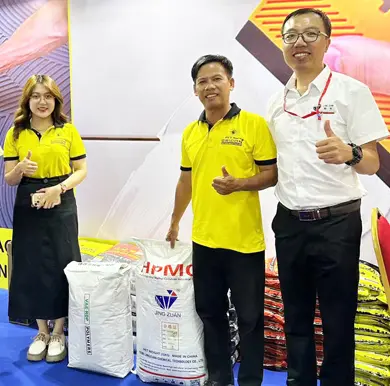
Dec . 25, 2024 11:27 Back to list
Exploring the Relationship Between HPMC and CMC in Pharmaceutical Applications
The Significance of HPMC and CMC in Modern Industries
The rapid advancements in various industries necessitate the use of versatile materials that can meet specific requirements of functionality and efficiency. Among these materials, Hydroxypropyl Methylcellulose (HPMC) and Carboxymethyl Cellulose (CMC) stand out as exceptional additives with widespread applications across diverse sectors, including pharmaceuticals, food production, cosmetics, and construction.
Understanding HPMC and CMC
HPMC is a semi-synthetic polymer derived from cellulose, an abundant natural polymer. It is characterized by its ability to form a gel in the presence of water. HPMC is often used as a thickening agent, film-former, and stabilizer. Its non-ionic nature makes it particularly valuable because it does not react with other ingredients, thereby preserving the integrity of formulations.
On the other hand, CMC is a water-soluble polymer created by the chemical modification of cellulose. It is an anionic derivative, meaning it carries a negative charge. This property enhances its ability to interact with water, making it an effective thickener, binder, and emulsifier. CMC is prevalent in a variety of applications due to its excellent solubility and viscosity-enhancing capabilities.
Applications in Pharmaceuticals
In the pharmaceutical industry, HPMC serves multiple roles, particularly in the formulation of tablets and controlled-release drugs. Its film-forming property allows it to create a protective coating, which enhances the stability of active pharmaceutical ingredients (APIs). Moreover, HPMC’s controlled-release characteristics enable a gradual release of medication. This not only improves therapeutic outcomes but also minimizes side effects associated with conventional dosing regimens.
CMC is also widely utilized in pharmaceuticals, predominantly as an excipient in tablet formulations and as a viscosity modifier in liquid medications. Its ability to bind and mask the taste of bitter drugs makes it an essential component in pediatric formulations. Furthermore, CMC is used in the preparation of gels and creams, ensuring a smooth application and effectiveness of topical medicinal products.
hpmc cmc

Impact on the Food Industry
In the food sector, both HPMC and CMC are invaluable as food additives. HPMC is often used as a thickener and texturizer in sauces, dressings, and baked goods, helping to enhance the mouthfeel and improve product stability. Its ability to form stable emulsions allows for better product consistency, which is particularly crucial in processed food items.
Similarly, CMC finds extensive use in the food industry as a thickener, stabilizer, and emulsifier. It helps maintain the quality of food products by preventing separation and crystallization. In ice creams and dairy products, CMC provides a creamy texture and enhances overall product quality by improving freeze-thaw stability. Additionally, CMC's ability to retain moisture contributes to extending the shelf life of various food items.
Applications in Cosmetics and Personal Care
In cosmetics and personal care products, HPMC and CMC act as thickeners and stabilizers, ensuring smooth consistency and enhanced product performance. HPMC is often incorporated into creams, lotions, and gels to improve spreadability and ensure even distribution of active ingredients. Its gentle nature makes it suitable for sensitive skin formulations.
CMC plays a crucial role in hair care products, shampoos, and conditioners, providing conditioning effects and improving the overall sensory experience during application. Furthermore, both HPMC and CMC help in the stabilization of emulsions in cosmetic formulations, ensuring long-lasting and stable products.
Conclusion
In conclusion, Hydroxypropyl Methylcellulose (HPMC) and Carboxymethyl Cellulose (CMC) are essential components across various industries. Their unique properties make them invaluable for enhancing product formulation, stability, and overall performance. As industries continue to evolve in response to consumer demands and technological advancements, the significance of HPMC and CMC is expected to grow, driving innovation and efficiency across the board. Whether in pharmaceuticals, food production, or cosmetics, these cellulose derivatives will remain at the forefront, shaping the future of many products we rely on daily. Their multifunctionality and effectiveness ensure that they will retain an important place in the industry for years to come.
-
Versatile Hpmc Uses in Different Industries
NewsJun.19,2025
-
Redispersible Powder's Role in Enhancing Durability of Construction Products
NewsJun.19,2025
-
Hydroxyethyl Cellulose Applications Driving Green Industrial Processes
NewsJun.19,2025
-
Exploring Different Redispersible Polymer Powder
NewsJun.19,2025
-
Choosing the Right Mortar Bonding Agent
NewsJun.19,2025
-
Applications and Significance of China Hpmc in Modern Industries
NewsJun.19,2025







